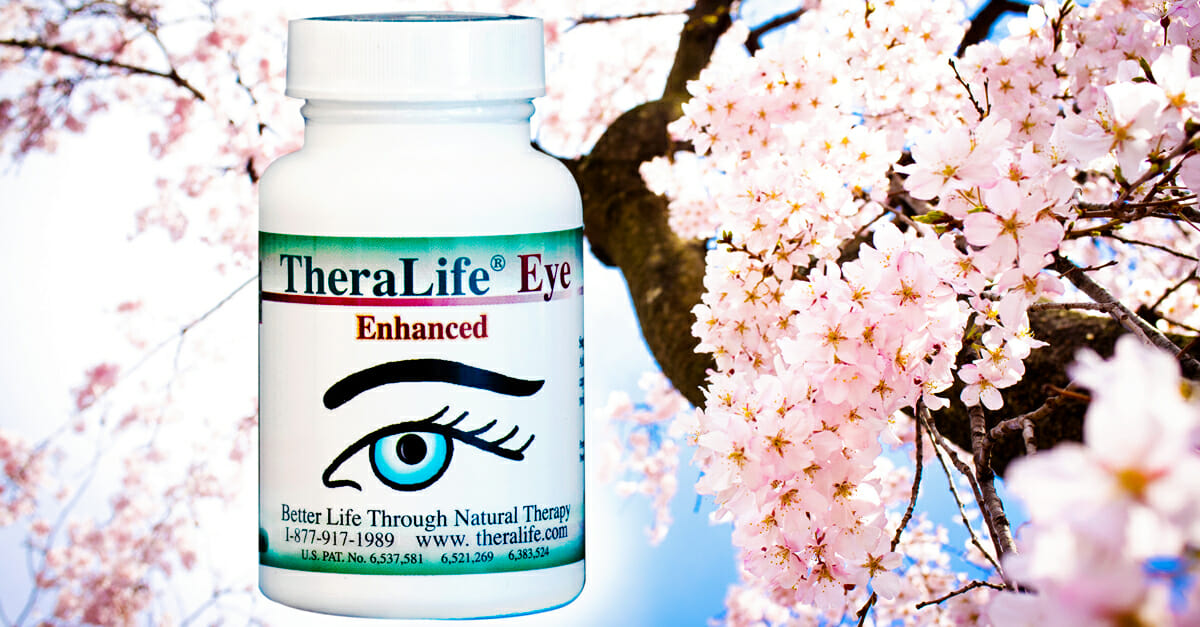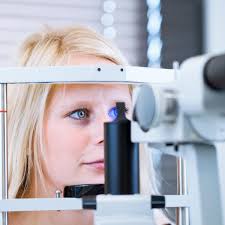How do you eyes feel?
Do you have chronic dry eyes? Your eyes are irritated, red, scratchy, and even watery. You made an appointment with an eye doctor. How do you know what tests should be performed to diagnose chronic dry eyes?
What is chronic dry eyes?
Chronic dry eyes is a condition in which a person doesn’t have enough quality tears to lubricate and nourish the eye. Tears are necessary for maintaining the health of the eye’s front surface and for providing clear vision.
chronic dry eyse is a common and often chronic problem, particularly in older adults. With each blink of the eyelids, tears spread across the front surface of the eye, known as the cornea.
Tears provide lubrication, reduce the risk of eye infection, wash away foreign matter in the eye and keep the eyes’ surface smooth and clear.
Excess tears in the eyes flow into small drainage ducts in the eyelids’ inner corners, which drain into the back of the nose. Chronic dry eyes can occur when tear production and drainage are not in balance.
Causes of Chronic Dry Eyes
- Decreased amount of tears.
Tears are produced by several glands in and around the eyelids.
Tear production tends to decrease with age, with various medical conditions, or as a side effect of certain medicines.Environmental conditions, such as wind and dry climates, can also decrease tear volume due to increased tear evaporation.When the usual amount of tear production decreases or tears evaporate too quickly from the eyes, dry eye symptoms occur. - Low quality of tears.
Tears are made up of three layers: oil, water, and mucus.
Each component protects and nourishes the front surface of the eye. A smooth oil layer helps prevent evaporation.
The mucin layer spreads the tears evenly over the surface of the eye.
If the tears evaporate too quickly or do not spread evenly over the surface of the eye, dry eye symptoms develop.
Risk factors for chronic dry eyes
- Age. Dry eyes are a part of the natural aging process. The majority of people over age 65 experience some symptoms of dry eyes.
- Gender. Women are more likely to develop dry eyes due to hormonal changes caused by pregnancy, the use of oral contraceptives, and menopause.
- Medications. Certain medicines, including antihistamines, decongestants, blood pressure medications, and antidepressants, can reduce tear production.
- Medical conditions. People with rheumatoid arthritis, diabetes, and thyroid problems are more likely to have dry eye symptoms. Also, problems with inflammation of the eyelids (blepharitis), inflammation of the eye surfaces, or the inward or outward turning of eyelids can cause dry eyes to develop.
- Environmental conditions. Exposure to smoke, wind, and dry climates can increase tear evaporation resulting in dry eye symptoms. Failure to blink regularly, such as when staring at a computer screen for long periods, can also contribute to the eyes’ drying.
- Contact Lenses and LASIK. Long-term use of contact lenses can be a factor in the development of dry eyes. Refractive eye surgeries, such as LASIK, can decrease tear production and contribute to dry eyes.
Advanced dry eyes may damage the cornea at the front surface of the eye and impair vision.
Diagnostic Tests for chronic dry eyes
Diagnosis
- A comprehensive eye exam.
- A test to measure the volume of your tears.- Schirmer’s test
- A test to determine the quality of your tears called Tear Breakup Test.
- A tear osmolarity test.
- Tear samples to look for markers of dry eye disease, including elevated matrix metalloproteinase-9 or decreased lactoferrin.
An eye exam that includes a complete history of your overall health and your eye health can help your doctor diagnose the cause of your dry eyes.
- Schirmer’s test – A test to measure the volume of your tears. Your doctor may measure your tear production using the Schirmer test.
- The tear breakup test measures the thickness of your tear, also called tear viscosity.
New Advances in dry eye diagnostics. – Tear Osmolarity Test & Rapid Pathogen Screening Test (MMP-9)
Two devices commonly used to conduct objective dry eye testing in many eye doctor’s offices include the Tear Lab Osmolarity System (TearLab, San Diego, CA) and the InflammaDry, Rapid Pathogen Screening test (Rapid Pathogen Screening, Inc, Sarasota, FL).
The first is an objective point of care test and can measure a 50-nL tear sample’s osmolarity.
The second study analyzes the matrix metalloproteinase 9 (MMP-9) qualitatively in tears. MMP-9 is considered to be a marker for inflammation, usually associated with dry eye.
Research Study
This research study conducted by Schargus and co-workers that evaluated the MMP-9 in tears and tear film osmolarity in a group of elderly patients (n=20; age = 72.0±6.1yrs) with previously undiagnosed dry eye.
The authors also examined the correlation between clinical dry eye tests and MMP-9 in this group of patients.
Dry eye symptoms (Ocular Surface Disease Index questionnaire) and signs (tear break-up time, Schirmer test, ocular surface staining) were evaluated in these patients.
Enzyme-linked immunosorbent assay [ELISA] test was also used to determine and confirm the concentrations of MMP-9 in tears collected via Schirmer strips.
Patients were classified into four (4) groups: Group A- mild dry eye; Group B, osmolarity difference > 8 mOsm/L between both eyes; Group C- osmolarity cutoff at 308 mOsm/L; Group D >308 mOsm/L).
Conclusion: Eleven percent (11%) of the symptomatic group and 14% of the suspected mild dry eye were positive for MMP-9. ELISA tests confirmed that the InflammaDry MMP-9 tests were accurate.
Sixty-seven percent of the symptomatic and 64% of the suspected mild dry eye were positive for tear osmolarity.
Tear film osmolarity showed a trend toward correlation with symptoms. In contrast, the quantitative MMP-9 values showed a trend toward correlation with corneal staining.
The study concluded that MMP-9 is possibly a late-stage sign that is hardly overexpressed in mild dry eyes.
In contrast, tear osmolarity tends to be a more frequent early indicator of ocular surface instability within mild dry eye patients.
How Can TheraLife Help?
TheraLife Eye capsules stimulate the production of normal tears from within. The oral treatment approach results in long-lasting dry eye relief using your own tears.
TheraLife Dry Eye recovery protocol consists of treatment for dry eyes, blepharitis, MGD all at the same time. This comprehensive approach gives us an edge in the field of chronic dry eyes treatments.
People who fail eye drops and prescription eye drops come to TheraLife.

Get tested for chronic dry eyes. Learn which tests work.
TheraLife Treats Chronic Dry Eyes
Oral dry eye treatment from inside out. No more drops.
To learn more: click here.
The above research information is an abstract from this article.
Schargus M, Ivanova S, Kakkassery V, Dick HB, Joachim S. Correlation of Tear Film Osmolarity and 2 Different MMP-9 Tests with Common Dry Eye Tests in a Cohort of Non-Dry Eye Patients. Cornea. Apr 23, 2015.
References
1. Abelson MB, Ousler GW, 3rd, Nally LA, Emory TB. Dry eye syndromes: diagnosis, clinical trials and pharmaceutical treatment—’improving clinical trials’. Adv Exp Med Biol 2002;506(Pt B):1079-1086.
2. Ousler GW, Wilcox KA, Gupta G, Abelson MB. An evaluation of the ocular drying effects of two systemic antihistamines: Loratadine and cetirizine hydrochloride. Ann Allergy Asthma Immunol 2004;93:5:460-464.
3. Schiffman RM, Christianson MD, Jacobsen G, Hirsch JD, Reis BL. Reliability and validity of the Ocular Surface Disease Index. Arch Ophthalmol. May 2000;118:5:615-621.
4. Ousler GW, Gomes PJ, Welch D, Abelson MB. Methodologies for the Study of Ocular Surface Disease. The Ocular Surface. Vol 3; 2005:143-154.
5. Abelson MB, Ousler GW, 3rd, Nally LA, Welch D, Krenzer K. Alternative reference values for TFBUT in normal and dry eye populations. Adv Exp Med Biol 2002;506(Pt B):1121-1125.
6. Xu KP, Yagi Y, Tsubota K. Decrease in corneal sensitivity and change in tear function in dry eye. Cornea 1996;15:3:235-239.
7. Bourcier T, Acosta MC, Borderie V, et al. Decreased corneal sensitivity in patients with dry eye. Invest Ophthalmol Vis Sci 2005;46:7:2341-2345.
8. Muller LJ, Vrensen GF, Pels L, Cardozo BN, Willekens B. Architecture of human corneal nerves. Invest Ophthalmol Vis Sci 1997;38:5:985-994.
9. Forstner G. Signal transduction, packaging and secretion of mucins. Annu Rev Physiol 1995;57:585-605.
10. Abdul-Fattah AM, Bhargava HN, Korb DR, Glonek T, Finnemore VM, Greiner JV. Quantitative in vitro comparison of fl uorescein delivery to the eye via impregnated paper strip and volumetric techniques. Optom Vis Sci 2002;79:7:435-438.
11. Korb DR, Herman JP, Finnemore VM, Exford JM, Blackie CA. An evaluation of the effi cacy of fl uorescein, rose bengal, lissamine
green, and a new dye mixture for ocular surface staining. Eye Contact Lens 2008;34:1:61-64.
12. Marquardt R SR, Christ T. Modifi cation of tear fi lm break-up time test for increased reliability. In: Holly FJ, ed. The Preocular Tear Film in Health, Disease and Contact Lens Wear. Lubbock, Texas: Dry Eye Institute, 1986:57-63.
13. Nally LA, Ousler GW, MB A. Ocular discomfort and tear film break up time in dry eye patients. Invest Ophthalmol Vis Sci 2000;41(Suppl)1436).
14. Lim KJ, Lee JH. Measurement of the tear meniscus height using 0.25% fl uorescein sodium. Korean J Ophthalmol 1991;5:1:34-36.
15. Gilbard JP. Human tear fi lm electrolyte concentrations in health and dry-eye disease. Int Ophthalmol Clin 1994;34:1:27.
16. Rolando M, Refojo MF, Kenyon KR. Increased tear evaporation in eyes with keratoconjunctivitis sicca. Arch Ophthalmol 1983;101:4:557-558.
17. Goto E, Tseng SCG. Differentiation of lipid tear defi ciency dry eye by kinetic analysis of tear interference images. Arch Ophthalmol 2003;121:173-80.
18. Singh R, Joseph A, Umapathy T, Tint NL, Dua HS. Impression cytology of the ocular surface. Br J Ophthalmol 2005;89:12:1655- 1659.





I have never had tears, I had lots of test when I was a Child but was told they didn’t know why. I was prescribed hypromelose eye drops & left to get on with it. As an adult I started experimenting with different eye drops and gels and now only use Thealoz duo preservative free gel and drops. I enquired with my doctor & was told when I was about 5 years old Riley Day Syndrome was recorded on my records. I researched this and went back to dr who referred me to a specialist who said it was doubtful I had Riley Day syndrome as I hadn’t got any other symptoms. He recommended follow up investigations in to my sore dry eyes but no follow up appointments have been offered. I am now 55 and just managing my symptoms myself. I live in UK & would appreciate any advice to help my symptoms Thank you
Tracey
Thank you for your inquiry-
From your description, I also believe you probably do not have Riley Day Syndrome since most of them have short life span. What I don’t know is if your lacrimal glands which produce tears are functioning or not. If they are alive, then yes, TheraLife can help you restore and revive your tear functions.
Question, your eye doctor may have done a tear volume test called Schirmer’s test, is that correct? What is your value?
Feel free to communicate with me at: [email protected]. Our company telephone number is 650-949-6080
Sincerely
Dr. Lily C. Yang
TheraLife Inc.
Tracey
Give TheraLife a try. I will follow up with you every weeks until you recover. Call me direct toll-free 877-917-1989 US/Canada
Looking forward to getting your life back on track.